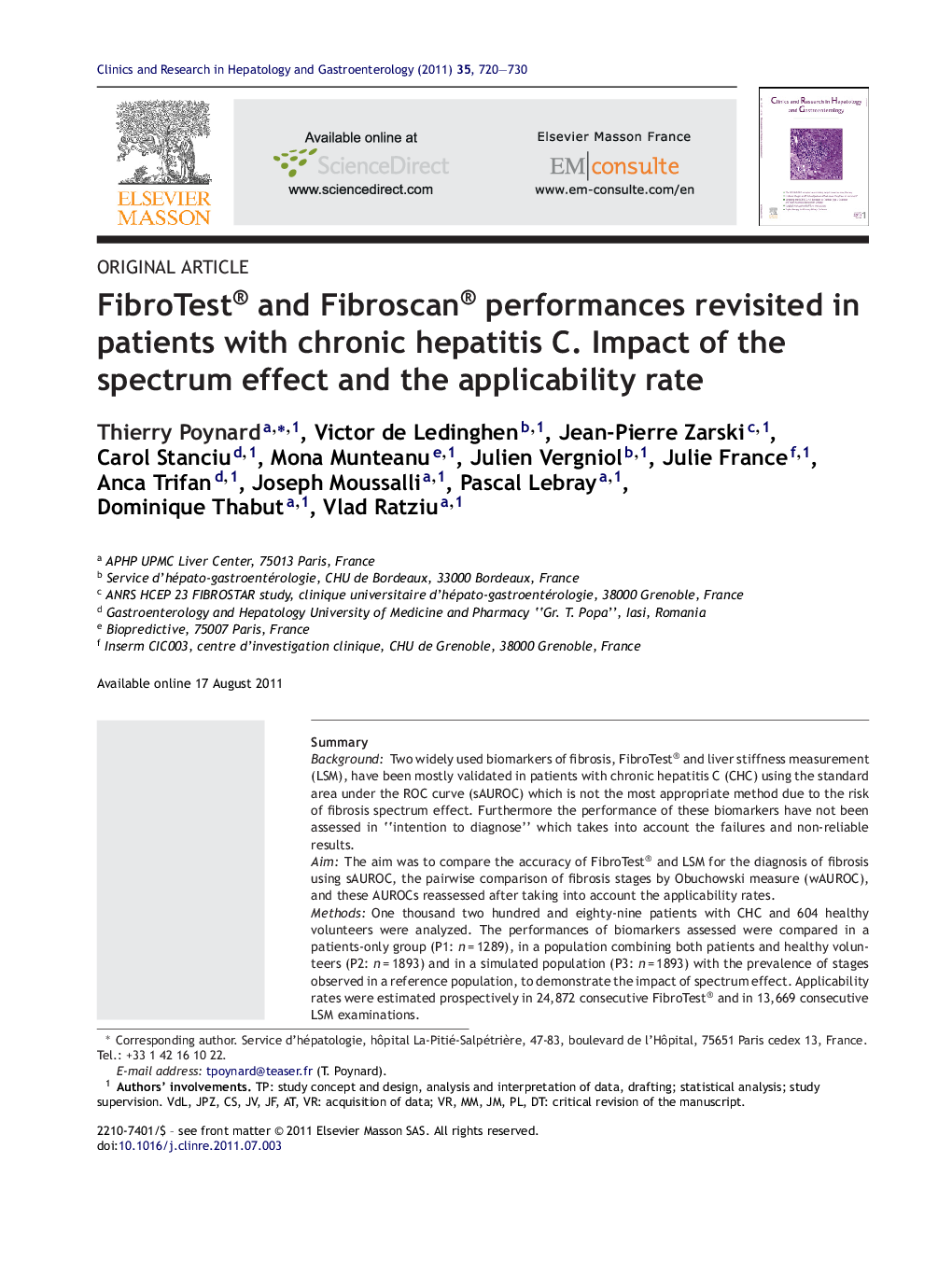| کد مقاله | کد نشریه | سال انتشار | مقاله انگلیسی | نسخه تمام متن |
|---|---|---|---|---|
| 3286094 | 1209283 | 2011 | 11 صفحه PDF | دانلود رایگان |

SummaryBackgroundTwo widely used biomarkers of fibrosis, FibroTest® and liver stiffness measurement (LSM), have been mostly validated in patients with chronic hepatitis C (CHC) using the standard area under the ROC curve (sAUROC) which is not the most appropriate method due to the risk of fibrosis spectrum effect. Furthermore the performance of these biomarkers have not been assessed in “intention to diagnose” which takes into account the failures and non-reliable results.AimThe aim was to compare the accuracy of FibroTest® and LSM for the diagnosis of fibrosis using sAUROC, the pairwise comparison of fibrosis stages by Obuchowski measure (wAUROC), and these AUROCs reassessed after taking into account the applicability rates.MethodsOne thousand two hundred and eighty-nine patients with CHC and 604 healthy volunteers were analyzed. The performances of biomarkers assessed were compared in a patients-only group (P1: n = 1289), in a population combining both patients and healthy volunteers (P2: n = 1893) and in a simulated population (P3: n = 1893) with the prevalence of stages observed in a reference population, to demonstrate the impact of spectrum effect. Applicability rates were estimated prospectively in 24,872 consecutive FibroTest® and in 13,669 consecutive LSM examinations.ResultsUsing wAUROC, the conclusions of studies with reliable results in P1 were different than in those of P2 and in P3. There was a lower performance of FibroTest® versus LSM in P1 (0.864 [0.855–0.873] vs. 0.883 [0.874–0.892]; P = 0.002) which was not found in P2 (0.893 [0.887–0.900] vs. 0.894 [0.887–0.901]; P = 0.86) and in P3 (0.899 [0.893–0.905] vs 0.902 [0.895–0.909]; P = 0.60). Using the sAUROC, in P1, P2 and P3, there was no significant difference between FibroTest® and LSM performance for advanced fibrosis and a lower performance of FibroTest® versus LSM for cirrhosis. In intention to diagnose, using wAUROCs performances were higher for FibroTest® vs. LSM in P1 (0.857 [0.848–0.866] vs. 0.814 [0.807–0.821]; P < 0.0001) and P2 (0.885 [0.879–0.892] vs. 0.743 [0.737–0.749]; P < 0.0001), without difference in P3 (0.891 [0.885–0.897] vs. 0.894 [0.887–0.901]; P = 0.90). Using sAUROC, the significant differences in favor of FibroTest® vs LSM persisted also for the diagnosis of advanced fibrosis, both in P1 and P2 (P < 0.0001) and for the diagnosis of cirrhosis in P1 (P < 0.001).ConclusionWhen the spectrum effects and applicability rates were taken into account, LSM had lower performance results than FibroTest® for the diagnosis of fibrosis stages.
Journal: Clinics and Research in Hepatology and Gastroenterology - Volume 35, Issue 11, November 2011, Pages 720–730